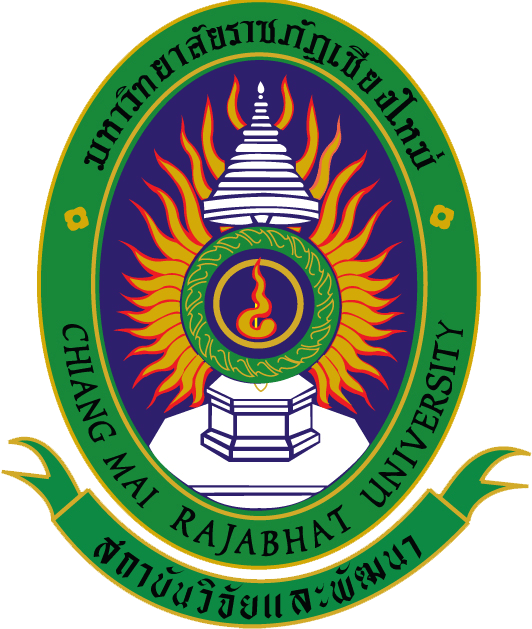
ระบบสารสนเทศงานวิจัย สถาบันวิจัยและพัฒนา มหาวิทยาลัยราชภัฏเชียงใหม่
Research Information System(RIS)
การใช้คลื่นอัลตร้าโซนิครและคลื่นไมโครเวฟในการสกัดสารสำคัญจากสมุนไพรไทยในพื้นที่จังหวัดเชียงใหม่
อาจารย์นริศรา วิชิต
คณะเทคโนโลยีการเกษตร
คำสำคัญ :
เลขทะเบียน :
1600-65-AGRI-TSRI
บทคัดย่อ
งานวิจัยนี้ได้ทำการศึกษาสภาวะที่เหมาะสมในการสกัดสารสำคัญในสมุนไพรพื้นที่จังหวัดเชียงใหม่ด้วยคลื่นอัลตร้าโซนิคและคลื่นไมโครเวฟ ทำการรวบรวมสมุนไพรทั้งหมด 17 ชนิด ได้แก่ กระชายขาว กระชายดำ กานพลู โกลจิเบอร์รี่ดำ โกลจิเบอร์รี่แดง ขมิ้นชัน ข่า ขิง เถาวัลย์เปรียง บอระเพ็ด ผักเสี้ยนผี ฝาง ไพล ฟ้าทะลายโจร มะแขว่น รางจืด และหญ้าหอม ศึกษาความเข้มข้นของตัวทำละลายที่เหมาะสม โดยใช้เอทานอลความเข้มข้นร้อยละ 70, 80 และ 90 ทำการวิเคราะห์หาปริมาณฟีนอลิกทั้งหมด พบว่า ความเข้มข้นของเอทานอลที่เหมาะสมในการสกัดสมุนไพรส่วนใหญ่คือ ร้อยละ 80
การศึกษาหาอุณหภูมิและระยะเวลาที่เหมาะสมในการสกัดสมุนไพรด้วยคลื่นอัลตร้าโซนิค โดยทำการสกัดสมุนไพรที่อุณหภูมิ 30 และ 50 องศาเซลเซียส นาน 30, 60 และ 120 นาที พบว่า การสกัดด้วยคลื่นอัลตร้าโซนิคที่อุณหภูมิ 50 องศาเซลเซียสเป็นเวลา 120 นาที จะมีปริมาณสารประกอบฟีนอลิกทั้งหมดสูงที่สุด และการทดลองหากำลังไฟและเวลาที่เหมาะสมในการสกัดสมุนไพรด้วยคลื่นไมโครเวฟพบว่า เมื่อทำการสกัดด้วยกำลังไฟ 200 และ 300 W เป็นเวลา 1 และ 3 นาที พบว่า การสกัดด้วยคลื่นไมโครเวฟที่กำลังไฟ 300 W เป็นเวลา 3 นาที สมุนไพรส่วนใหญ่จะมีปริมาณสารประกอบฟีนอลิกทั้งหมดสูงที่สุด ทำการเปรียบเทียบผลการสกัดสมุนไพรด้วยวิธีดั้งเดิม การสกัดด้วยคลื่นอัลตร้าโซนิคอุณหภูมิ 50 องศาเซลเซียสเป็นเวลา 120 นาที และการสกัดด้วยคลื่นไมโครเวฟที่ความร้อน 300 W เป็นเวลา 3 นาที พบว่า การใช้เทคนิคการสกัดด้วยคลื่นอัลตร้าโซนิคและคลื่นไมโครเวฟต่างก็ให้ผลการสกัดที่ดีกว่าวิธีปกติ โดยมีปริมาณสารประกอบฟีนอลิกทั้งหมด สารประกอบฟลาโวนอยด์ทั้งหมด และความสามารถในการต้านอนุมูลอิสระในปริมาณที่สูงกว่าอย่างมีนัยสำคัญทางสถิติ
Abstract
This research study the optimum conditions for the extraction of the active ingredients in herbs in Chiang Mai province were studied using ultrasonic and microwave. A total of 17 herbs was collected, namely Boesenbergia rotunda (L.) Mansf., Kaempferia parviflora Wall. ex Baker, Syzygium aromaticum (L.) Merr. & Perry, Lycium ruthenicum Murr, Lycium barbarum L., Curcuma longa Linn., Alpinia galanga (L.) Willd., Zingiber officinale Roscoe, Derris scandens (Roxb.) Benth, Tinospora crispa (L.) Miers ex Hook.f. & Thoms, Cleome viscosa L., Caesalpinia sappan L., Zingiber cassumunar Roxb.,Andrographis paniculata (Burm.f.) Nees, Zanthoxylum limonella Alston., Thunbergia laurifolia Lindl. and Chamaemelum nobile (L.). Optimal solvent concentrations were studied using 70, 80 and 90 percent ethanol concentrations to determine the total phenolic content. The experimental results showed that the optimum ethanol concentration for the extraction of most herbs was 80%.
The study on optimum temperature and duration of ultrasonic extraction of herbs was carried out at 30 and 50 °C for 30, 60 and 120 minutes. The temperature of 50 °C for 120 minutes had the highest total phenolic content. The experiment to determine the power and time for the extraction of herbs by microwave showed that when extraction at 200 and 300 W power for 1 and 3 minutes, most herbs had the highest total phenolic compounds after microwave extraction at 300 W for 3 minutes. The results of traditional herb extraction, ultrasonic extraction at 50 °C for 120 minutes and microwave extraction at 300 W for 3 minutes were compared. The results showed that using ultrasonic and microwave extraction techniques were significantly higher than conventional methods in terms of total phenolic compounds, total flavonoid compounds and antioxidant capacity.
ไฟล์งานวิจัย
ข้อมูลการนำไปใช้ประโยชน์
6 19 ส.ค. 2565
สำนักงานคณะกรรมการส่งเสริมวิทยาศาสตร์ วิจัยและนวัตกรรม (สกสว.)
สำนักงานคณะกรรมการส่งเสริมวิทยาศาสตร์ วิจัยและนวัตกรรม (สกสว.) ชั้น 14 อาคาร เอส เอ็ม ทาวเวอร์ 979/17-21 ถนนพหลโยธิน แขวงสามเสนใน เขตพญาไท กรุงเทพฯ 10400
02 278 8200
callcenter@trf.or.th, webmaster@trf.or.th